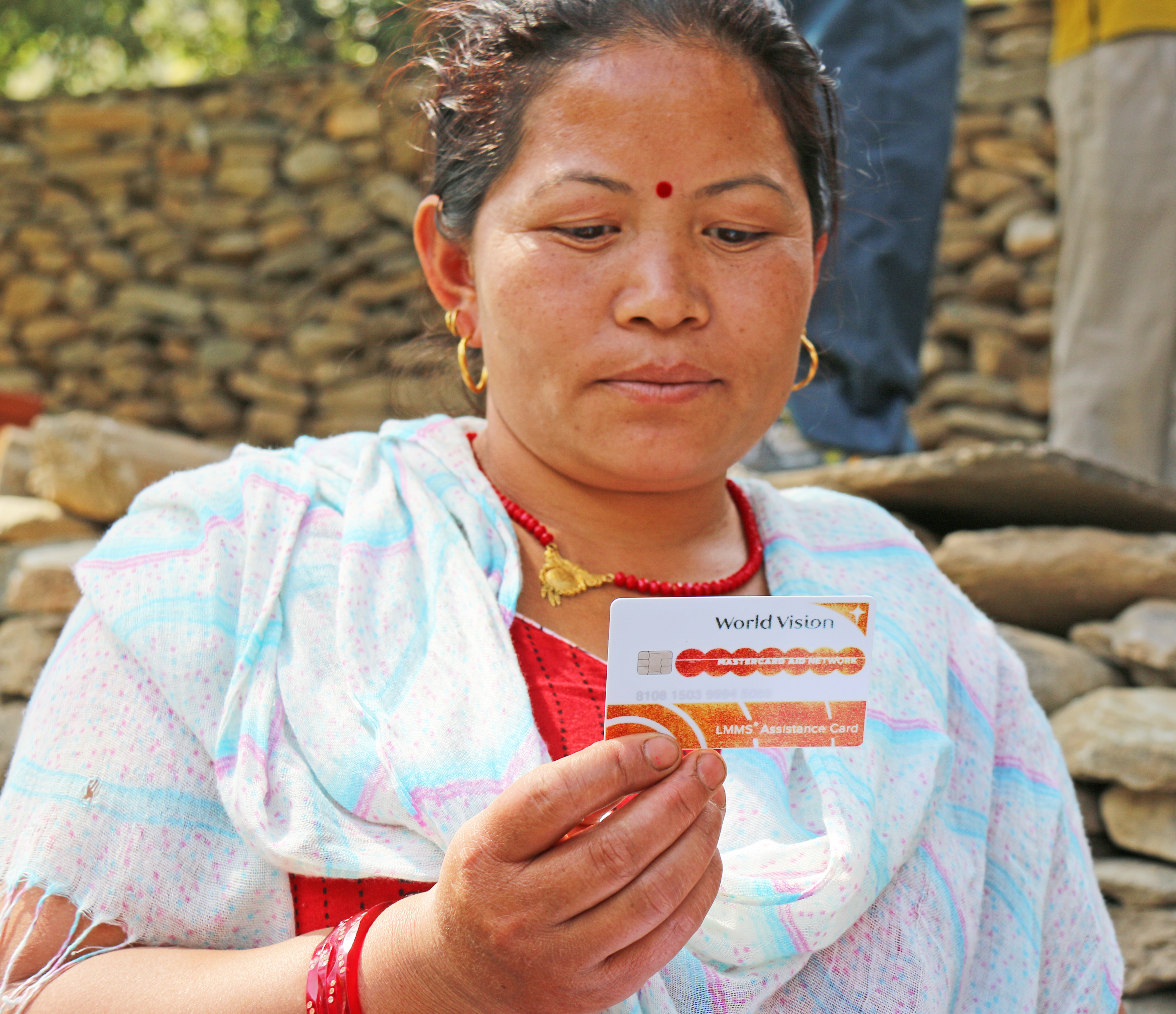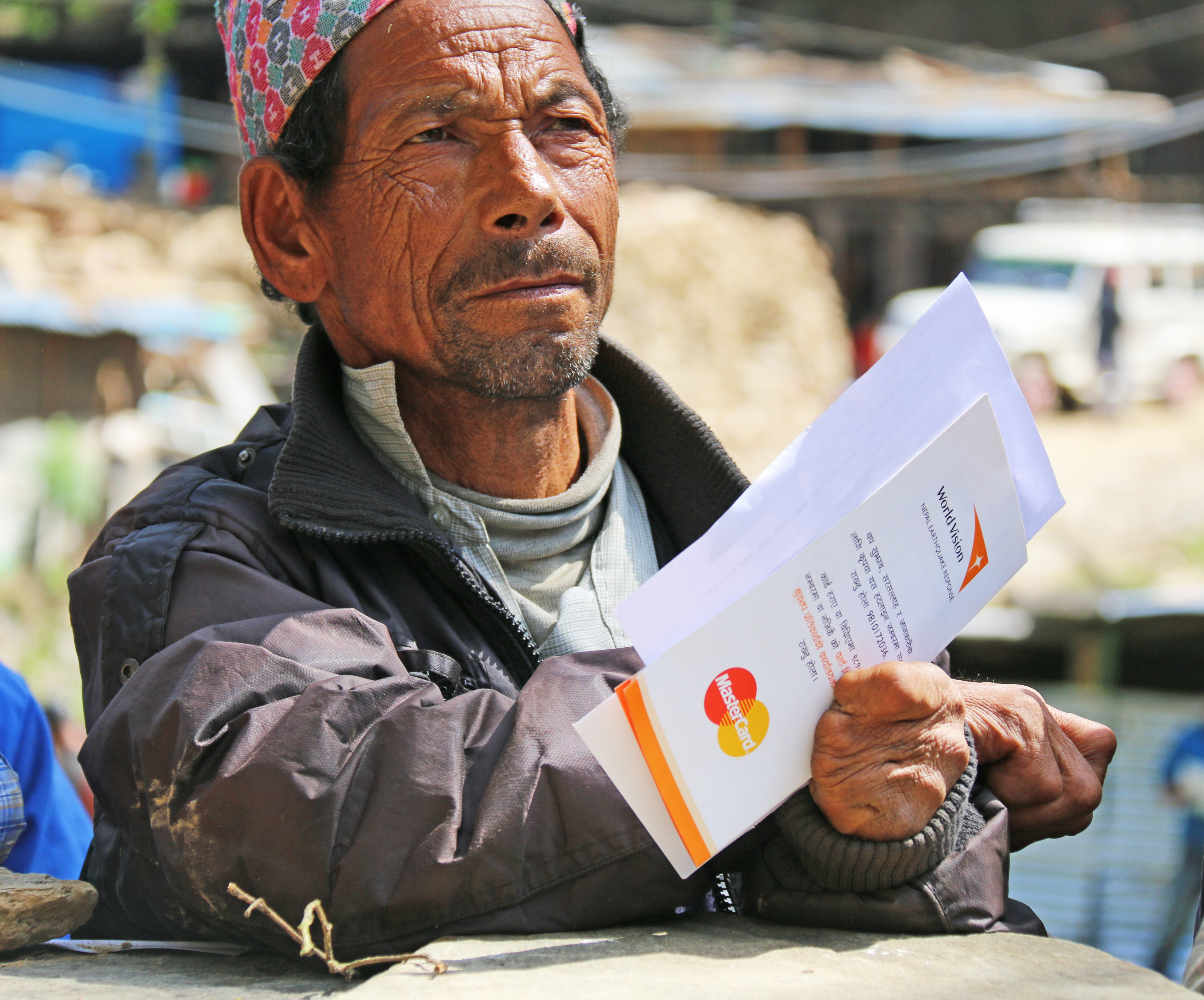Transforming aid delivery through the Humanitarian Assistance Card
With Humanitarian Assistance Card in hand, Nar Bahadur, 82, waits in queue with a hopeful smile to purchase vegetable seeds and other agricultural supplies from an authorised vendor in Sindhupalchowk. He is one of the beneficiaries who received the card earlier that day, part of a distribution to improve the livelihoods of earthquake-affected communities.
When his turn comes, Nar Bahadur inserts the card and presses the pin code that he had been given earlier. After two failed attempts, on his third try he finally succeeds in logging into the system.
On the display screen, arrays of vegetables and crops seeds and agricultural tools appear. Since it is now the season to plant maize in Nar Bahadur's village, he quickly purchases maize seeds and a few packets of manure. After this purchase, he still has some points left on his card.
"I will use it later when I want to purchase other seeds," he cheerfully explains.
For Nar Bahadur, it is the first time he has ever seen or used such technology. Although he has received aid several times before, it was through the traditional paper voucher model. In his words, this technology is "strange and easy."
"In other distributions we had to wait for long hours," he states. "With this system, I can come and buy the items when it suits me."
Nar Bahadur's house was completely destroyed in the earthquake last year. Along with his house he also lost his means of living when his stored seeds and agricultural tools were damaged. The earthquake had a very serious impact on agriculture-based livelihoods, with an estimated loss of $283.6 million in the agriculture sector.
To address this pressing need, World Vision is helping farmers in rural Nepal restore their livelihood by providing agricultural supplies through Cash Based Programming. The Humanitarian Assistance Card worth between NRs 5,700 ($53 USD) and 8,000 ($74 USD), is provided to vulnerable households. Using this card, beneficiaries can purchase commodities of their choice from authorised local vendors. It gives them freedom of choice to purchase what they need from a wide section of goods.
Receiving this help to restore their livelihood was a relief for families, like Nar Bahadur's, who rely on agriculture for their income. "I could not have purchased these items on my own," he says as he arranges the supply of manure to take home.
So far this technology has benefitted more than 2,000 households in Sindhupalchowk and Dolakha district. The beneficiaries of Gorkha district can also soon reap the benefits from this program.
Nqobile Ncube, World Vision Livelihood Advisor, says this technology not only gives beneficiaries the freedom of choice but also empowers local business. Speaking about the economic benefit for the community he states, "Empowered local businesses will further invest in the same communities, which leads to the inclusive development of the entire community."
By: Ankush Chalise, Emergency Communications Coordinator, World Vision International Nepal

